We’ve not had an update from the Lowland Tapir Conservation Initiative for a while, so it’s great to receive not one, not two, but three updates from Patricia Medici, our tapir conservationist.
“Here I am for another update from the field and I am expecting this to be a long one! We have carried out THREE field expeditions since my last update (on World Tapir Day) and there is SO MUCH I would like to share with all of you.
“I will provide updates from all three expeditions separately:
Cerrado, June
“As mentioned in previous updates, the selected study area for the Lowland Tapir Conservation Initiative (LTCI) Cerrado Tapir Program is a landscape located along a highway in between Nova Alvorada do Sul and Casa Verde, Mato Grosso do Sul State, Brazil.
“The idea is to have a continuum of studied/sampled areas. The study area is approximately 2,200km2 in size, including 12% of natural habitat (Cerrado fragments, gallery forests, and marshland).
“The LTCI Cerrado Tapir Program will evaluate the impact of threats on tapir populations; therefore, the study area includes several threats to tapirs including: road-kill, poaching, habitat destruction and fragmentation, agri-business (soy bean, sugar cane), eucalyptus plantations, forest fires, charcoal production, pollution of water bodies by pesticides etc.
“In addition, we selected THREE patches of Cerrado habitat within the study area for tapir captures and monitoring.
“The main objectives of the June expedition were:
“One – to search for tapir signs (footprints, faeces, foraging signs) and tapir sightings throughout the study area and select locations for the establishment of bait stations and future placement of traps.
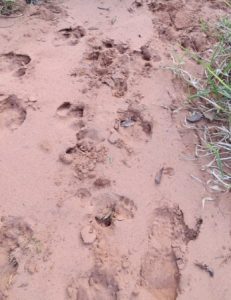
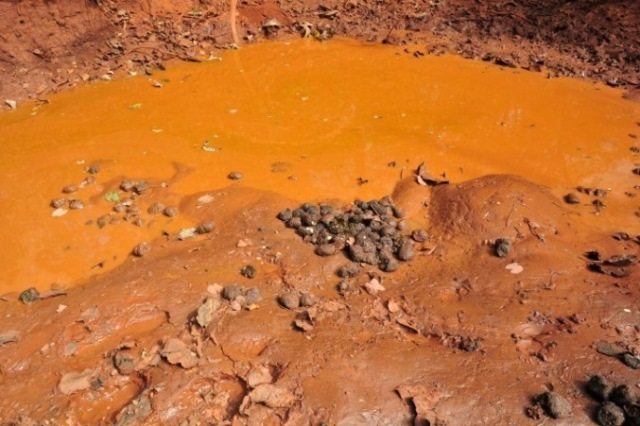
“Two – to make a decision about the most appropriate tapir capture methods for the Cerrado
“Three – to monitor the two highways crossing the study area for tapir road-kill (sampling for health and genetic studies)
“Four – to continue the process of establishing contacts/partnerships with local stakeholders including landowners, landless people, small farmers in Agrarian Reform settlements, urban and rural schools, community centres, local governmental agencies, local police stations, etc.
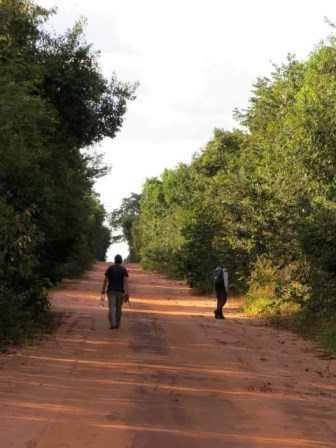
“The main results included:
1. The establishment of 15 bait stations (salt) in identified tapir paths;
2. We had our first tapir sighting in the Cerrado (a tapir that was actually alive and not dead by the highway), a sub-adult female calmly resting in an artificial water hole in the middle of the afternoon (!!!)
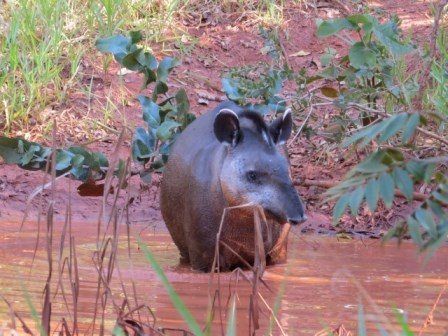
3. We decided that the most appropriate capture method in the Cerrado will be pitfall traps, with the occasional use of darting from a distance in specific situations. As there is A LOT of poaching in the Cerrado and we do not feel comfortable to build permanent box traps that can be used by poachers when we are not in the field. At least for now, we will use pitfall traps that can be used during capture expeditions and camouflaged before we leave. We have successfully captured 23 tapirs in pitfall traps in the Atlantic Forest and we are confident this method will be very successful in the Cerrado as well;
4. We recorded and sampled the staggering number of SIX tapirs hit by cars and killed in the highways…heart breaking;
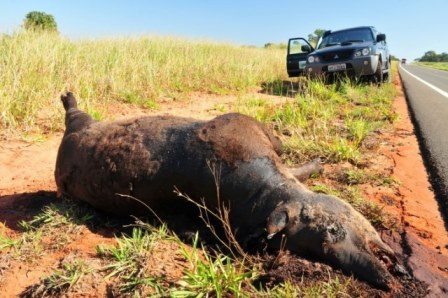
5. We collected tapir faecal samples for the study of faecal parasites, an important parameter of tapir health; and,
6. We visited and/or had meetings with a number of local stakeholders, including the main rural school that provides education to most children and teenagers living in the four landless settlements (580 families) in the region.